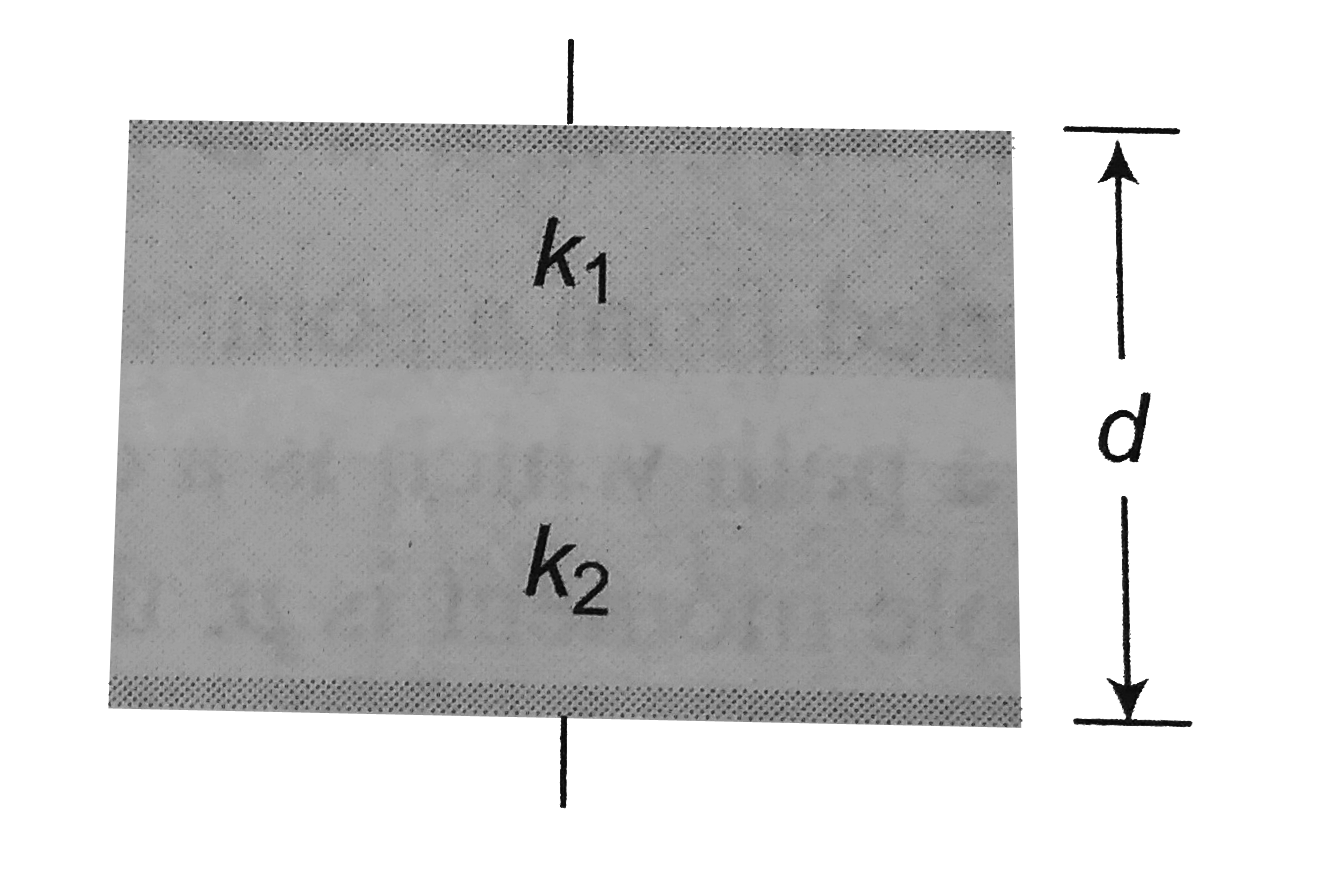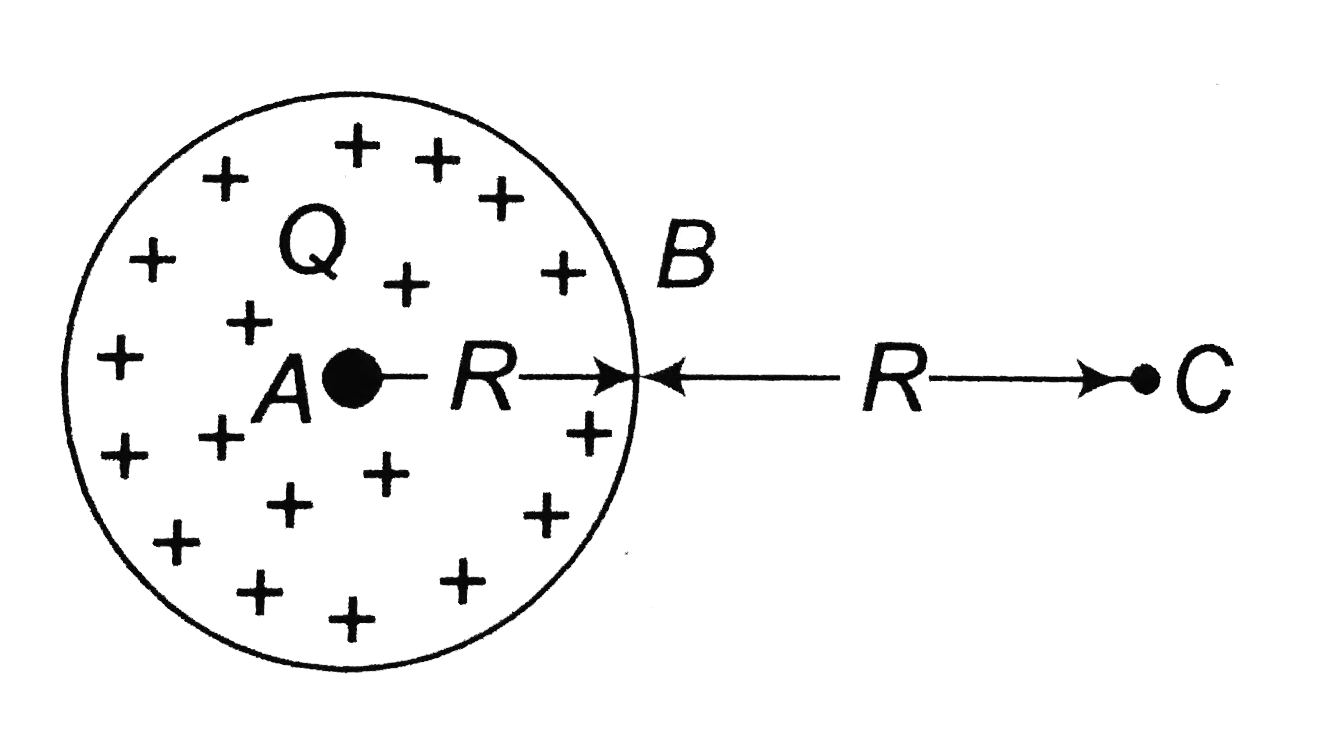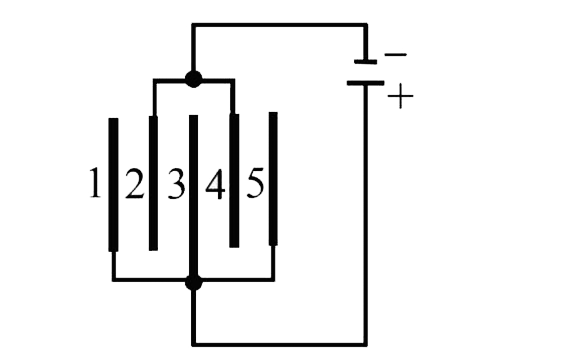Complete Solutions to Section D - Chapter End Test of chapter ELECTRIC POTENTIAL & CAPACITANCE of Class 12 book with complete answers and questions
| Class 12 | PHYSICS |
| Chapter | ELECTRIC POTENTIAL & CAPACITANCE |
| A2Z | Section D - Chapter End Test |
| Number Of Questions | 29 |
| Academic Year | 2023-24 |
Given: electric potential, `phi = x^(2) + y^(2) +z^(2)`. The modulus of electric field at `(x, y, z)` is
View Solution`125` identical drops each charged to the same potential of `50` volts are combined to from a single drop. The potential of the new frop will be
View SolutionFigure shown three points. `X, Y` and `Z` forming an equilaternal triangle of side `s` in an unifrom electric field of strength `E`. A unit positive test charge is moved from `X` to `Y`, from `Y` to `Z`, and from `Z` back to `X`.

Which one of the following correctly gives the work done against electrical forces in moving the charge along the various parts o fthis path ?
View SolutionA point charge is surrounded symmetrically by six identical charges at distance `r` as shown in the figure How much work is done by the froces of electrostatic repulsion when the point charge at the centre is removed to infinity ?

View SolutionA charge `+Q` at `A` (see figure) produces electric field `E` and electric potential `V` at `D`. If we now put charges `-2Q` and `+Q` at `B` and `C` respectively, then the electric field and potential at `D` will be

View SolutionThe concentric, thin metallic spheres of radii `r_(1)` and `r_(2) (r_(1) gt r_(2))` carry charges `q_(1)` and `q_(2)` respectively. Then the electric potential at distance `r (r_(2) lt r lt r_(1))` will be `(1)/(4pi epsilon_(0))` times
View SolutionIn figure below, the point charge `Q_(1)` causes an electric potential of `60 V` and an electric field strength of `30 Vm^(-1)` at `P`. and the point charge `Q_(2)` separately causes a potential of `120 V` and a field strength of `40 Vm^(-1)` at `P`.
Which one the following gives possible value of potential and field strength at `P` due to joint action of `Q_(1)` and `Q_(2)` ?

View SolutionTwo point charges are kept at a certain distance from one another. The graph represents the variartion of the potential along the straight line connecting the two charges. At what point is the electric field zero ?

View SolutionA, B, C, D, P, and Q are points in a uniform electric field. The potentials at these points are `V(A) = 2 V. V(P) = V( B) = V(D) = 5 V`, and `V(C) = 8 V`. Find the electric field at P.
 .
.
View SolutionFigure shown two equipotential lies `x, y` plane for an electric field. The scales are market. The `x`-component `E_(x)` and y-component `E_(y)` of the field in the space between these equipotential lines are respectively

View SolutionAn electric dipole is placed along the X-axis `O`. Point `P` is at a distance of `20cm` from the origin such that `OP` makes an angle `pi//3` with the `X`-axis. If the electric field at `P` makes an angle `theta` with the`X`-axis the value of `theta` will be

View SolutionAn electric field is given by `E_(x) = - 2x^(3) kN//C`. The potetnial of the point `(1, -2)`, if potential of the point `(2, 4)` is taken as zero, is
View SolutionAll six capacitors shown are identical. Each can withstand maximum `200` volts between its terminals. The maximum voltage that can be safely applied between `A` and `B` is

View SolutionTwo identical parallel plate capacitors are connected in series to a battery of `100V`. A dielectric slab of dielectric constant `4.0` is inserted between the plates of second capacitor. The potential difference across the capacitors will now be respectively
View SolutionFive capacitors of `10 muf` capacity each are connected to `a.d.c` potential of `100` volts as shown in the adjoining figure. The equivalent capacitance between the points `A` and `B` will be equal to

View SolutionA frictionless dielectric plate `S` is kept on a frictionless table `T`. A charged parallel plate capacitance `C` (of which the plates are frictionless) is kept near it. The plate `S` is between the plates. When the plate `S` is left between the plates

View SolutionThe mean electric energy density between the plates of a charged capacitor is (here `q =` charge on the capacitor and `A =` area o fthe capacitor plate)
View SolutionThe potentials of the two plates of capacitor are `+10V` and `-10 V`. The charge on one of the plate is `40 C`. The capacitance of the capacitor is
View SolutionTwo dielctric slabs of constant `K_(1)` and `K_(2)` have been filled in between the plates of a capacitor as shown below. What will be the capacitance of the capacitor ?

View SolutionTwo parallel plate air filled capacitors, each of capacitacne `C` are joinied to a source of constant `e mF V` as shown in figure. The plate `A` is earthed. Plates `B` and `C` are connected together. Plate `D` is connected to the positive pole of the battery whose negative is earthed. the combined capacitance of the arrangement is

View SolutionFour very large metal plates are given charges as shown in figure. The middle two are then connected through a wire. Find the charge that will flow through the wire.

View SolutionIn, the initial status of capacitors and their connections is show. Which of the folllowin is incorrect about this circuit?
 .
.
View SolutionA charge +q is carried from point `A( r, 135^(@))` to point `B(r, 45^(@))` following a path, which is a quadrant of circle of radius r ( Fig. 3.97). If the dipole moment is P, find the work done by the external agent (assume short dipole).
 .
.
View SolutionThe electric potential `V` in volts in a region of space is given by `V = ax^(2) + ay^(2) + 2azy`. The work done by field when a `2C` test charge moves from point `(0, 0, 0.1m)` to origin is `5 xx 10^(-5) J` . Determine `a`.
View SolutionFind the ratio of electric work done in bringing a charge `q` from `A` to `B(W_(AB))` and that from `B` to `C(W_(BC))` in a sphere of charge `Q` distributed uniformly throughout its volume.

View Solutionfind the work done by an external agent in slowly shifting a charge `q = 1 mu C` in the electric field ` vec E = 10^3 hat i Vm^-1` from the point `P(1,2) "to" Q(3, 4)`.
View SolutionFive identical capacitor paltes, each of area A, are arranged such that adjacent plates are at a distance d apart, the plates are connected to a source of emf V as shown in the figure

The charge on plate 1 is ………..and on plate 4 is.............
View SolutionAssertion: Electrons move away from a low potential to high potential region.
Reason: Because electrons have negative charges
View SolutionAssertion: If the distance between parallel plates of a capacitor is halved and dielectric constant is made three times, then the capacitor becomes `6` times.
Reason: Capacity of the capacitor does not depend upon the nature of the meterial.
View Solution
Section D - Chapter End Test questions and complete solutions for chapter ELECTRIC POTENTIAL & CAPACITANCE of A2Z PHYSICS (HINGLISH) of Class 12
All Exercises from A2Z Class 12 PHYSICS ELECTRIC POTENTIAL & CAPACITANCE
- AIIMS Questions
- AIPMTNEET Questions
- Assertion Reason
- Capacitor
- Capacitor Circuits
- Capacitor With Dielectric
- Electric Potential
- Electric Potential Energy
- Euipotentials
- Grouping Of Capacitors
- Problems Based On Mixed Concepts
- Relation Between Electric Field And Potential
- Section B - Assertion Reasoning
- Section D - Chapter End Test